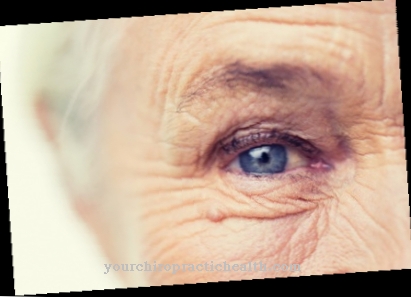The Life expectancy is calculated on a statistical basis and always relates to a population in the same geographical area with the same living conditions. It is determined using mortality tables. In addition, life expectancy is only valid at a specific point in time and can change over time.
What is the life expectancy?

Life expectancy indicates the average expected period of time that a living being will still live from a defined period of time. It is determined with the help of a life table, which is based on the death statistics of the past and the model assumptions of the future.
Mostly, life expectancy is calculated from the time of birth, so that it covers the entire life span of the person. However, the higher the age, the statistical life expectancy of the living population of the corresponding age group increases. This is because those who have already died in this age group are no longer included in the statistics after the calculation period.
The calculation of life expectancy is based on the extrapolation of current living conditions into the future. However, the life expectancy to be determined can change at any point in time due to changes in living conditions.
Influencing
Life expectancy is influenced by many factors. These factors result e.g. B. from local, cultural and general living conditions. In order to determine in detail how long the life span of a currently living person is statistically, local influences should therefore be recorded in addition to overall social influences.
Local influences are expressed, for example, in the given environmental conditions. So it is crucial for people, among other things, whether they are exposed to constant pollution from traffic or surrounding industrial plants. Does he live in the city or in the country? How high is the stress level at work? What other harmful influences are there? Medical care in the relevant residential area also plays a role. These are factors that are of local origin.
General factors relate to the given economic living conditions in the entire country, general medical progress, the nutritional situation or general health awareness.
The basic economic living conditions have improved significantly in contrast to previous generations. So today economic emergencies that lead to famine are excluded in all western industrial countries. Armed conflicts, which previously influenced general life expectancy, no longer take place in Western Europe.
Healthcare has made revolutionary advances in the control of serious, deadly infectious diseases. Many infectious diseases can now be fought well with antibiotics or have almost been eradicated by mass vaccinations. The fight against epidemics in particular has greatly increased life expectancy in recent decades.
Child mortality has also fallen dramatically. On the other hand, many so-called lifestyle diseases occur today in old age, which can be traced back to an unhealthy lifestyle, such as overeating, sedentary lifestyle or smoking. However, medical advances have already come to the point of severely reducing the number of deaths from these diseases. This also increases the general life expectancy.
The greatest risks of dying prematurely are today such factors as obesity (obesity), smoking, lack of exercise, high blood pressure or diabetes. There are also genetic factors that influence life expectancy.
Gender differences were also found. Statistically, men die earlier than women. This can have many causes. For example, men often take higher risks and thus suffer more accidents than women. Men are more often exposed to higher risks at work than women and therefore often develop occupational diseases. Until recently, the health awareness of men was even less pronounced than that of women.
However, biological factors may also play a role in the different life expectancy of the sexes. So hormonal and genetic causes are discussed. The male sex hormone, for example, is said to promote the development of arteriosclerosis and thrombosis.
In addition, the man only has one X chromosome, while the Y chromosome only contains gender-relevant information. Step z. If, for example, genetic errors are found in the genes of the X chromosome, they cannot be compensated for by a second X chromosome. The illnesses it causes may shorten the life expectancy of many men.
Illnesses & ailments
However, an increase in life expectancy does not automatically mean an increase in the quality of life. Many illnesses no longer lead to immediate death, but the likelihood of chronic illnesses increasing with age.
These diseases often drastically reduce the quality of life. For example, rheumatic diseases often develop that are accompanied by restricted mobility. Chronic cardiovascular diseases are also common. In many cases, senile dementia also develops.
The amount of care required increases in line with increasing life expectancy.In the next few years, medicine will therefore face the growing challenge of treating these so-called degenerative diseases in such a way that quality of life is maintained or restored.
There are already several indications for this. With regard to Alzheimer's disease, there are hopeful approaches for the development of an active ingredient that can at least stop the disease. However, much research will still be needed in this area.
Significant progress has also been made in the control of cardiovascular diseases, for example through the introduction of new types of pacemakers. In principle, medical progress will make it possible to achieve significant therapeutic success for all age-related diseases. However, not only medicine, but also changes in health awareness must contribute to maintaining the quality of life as well as increasing life expectancy by avoiding old-age diseases.













.jpg)

.jpg)
.jpg)











.jpg)